Articles > Geography
Know Czechia Largest Cities? Here are the top 25 to get you started.
1. Prague (Population: 1,301,432)
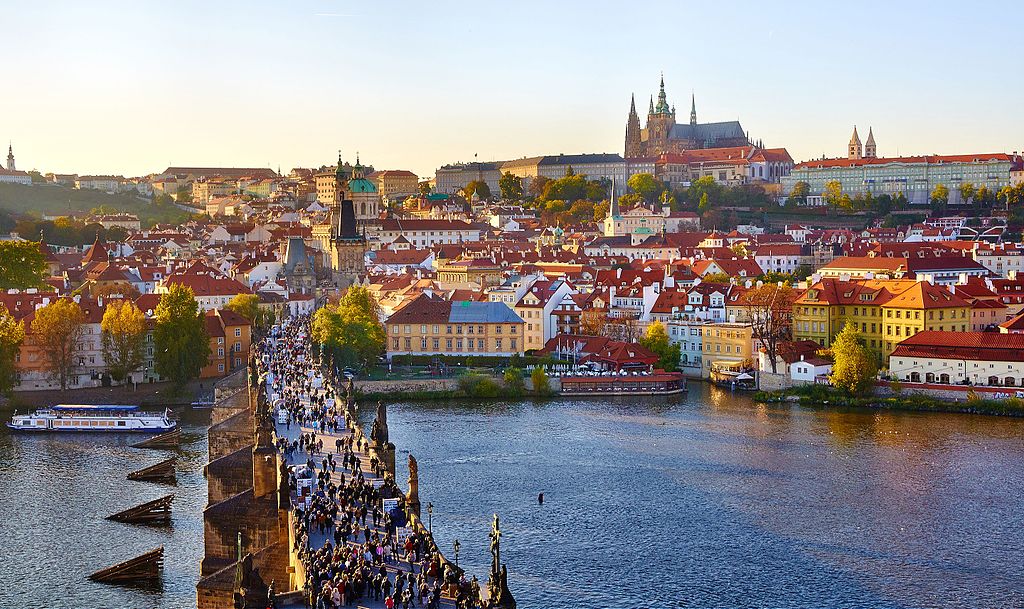
Prague, the capital of Czechia, spans both banks of the Vltava River and dazzles with a skyline of spires, domes, and castles. The medieval Charles Bridge, Gothic St. Vitus Cathedral, and storybook Old Town Square reflect centuries of architectural splendor, while neighborhoods like Malá Strana and Vinohrady add café culture and leafy parks. Beyond postcard views, Prague is a living cultural powerhouse with world-class theaters, galleries, and festivals anchored by a robust university scene. Trams rattle past Baroque palaces and modernist villas, and brewery cellars sit beside cutting-edge bistros reimagining Czech classics. As a transport hub, the city opens easy access to Bohemian forests and castles, yet it remains walkable and intimate at its core. Whether you’re after quiet courtyards, river cruises, or bustling music clubs, Prague’s mix of heritage and creative energy rewards every wander.
Interesting Fact:
The working Astronomical Clock on Old Town Hall first struck time in 1410.
2. Brno (Population: 398,510)
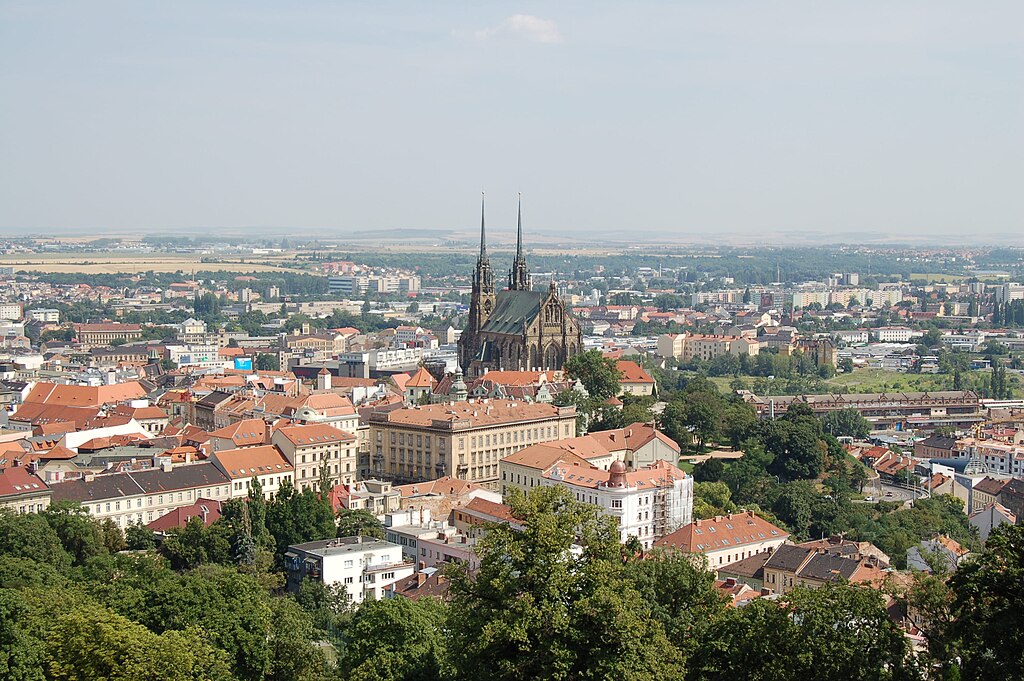
Brno, the capital of Moravia, blends a collegiate spirit with design-forward modernism. Dominated by Špilberk Castle and the twin towers of Petrov Cathedral, the center leads to hidden courtyards, cafes, and wine bars championing Moravian vintages. UNESCO-listed Villa Tugendhat showcases Brno’s architectural bravado, while sleek tech parks and maker spaces signal a future-focused economy. Students fill terraces around Náměstí Svobody, and tram lines knit together neighborhoods heavy on galleries, theaters, and indie coffee roasters. Food ranges from hearty Moravian dishes to inventive tasting menus, and beer culture thrives in cellars and courtyards. Green belts and reservoirs ring the city, perfect for cycling and weekend swims. Brno’s friendly scale makes its cultural life feel accessible, with festivals, design weeks, and music venues easy to hop between on foot or tram.
Interesting Fact:
Brno’s Villa Tugendhat is a canonical work of modernism by Ludwig Mies van der Rohe.
3. Ostrava (Population: 282,450)
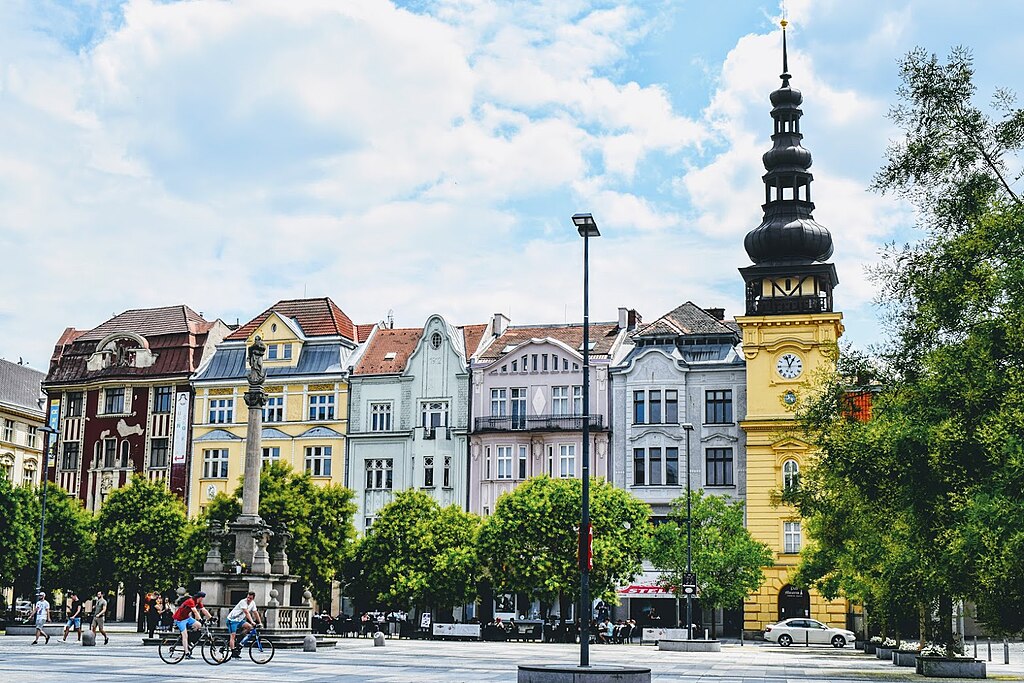
Ostrava, in the country’s industrial northeast, has transformed its coal-and-steel past into a striking cultural canvas. The former Lower Vítkovice ironworks is now an architectural playground of blast furnaces, concert halls, and science centers, where festivals light up the night among towering pipes. Stodolní Street buzzes with clubs and bars, while museums trace the region’s mining heritage and the resilience of its communities. Green spaces and bike routes spread along the Ostravice River, and nearby Beskid Mountains invite hiking and skiing. Contemporary galleries, street art, and evolving gastronomy showcase a city comfortable reinventing itself without erasing roots. Efficient transport links make it an anchor for cross-border trips into Poland and Slovakia, yet its distinct edge—part industrial theater, part friendly neighborhoods—feels uniquely Ostrava.
Interesting Fact:
The former blast furnaces at Lower Vítkovice can be toured all the way up to a panoramic viewing deck.
4. Plzeň (Population: 174,007)
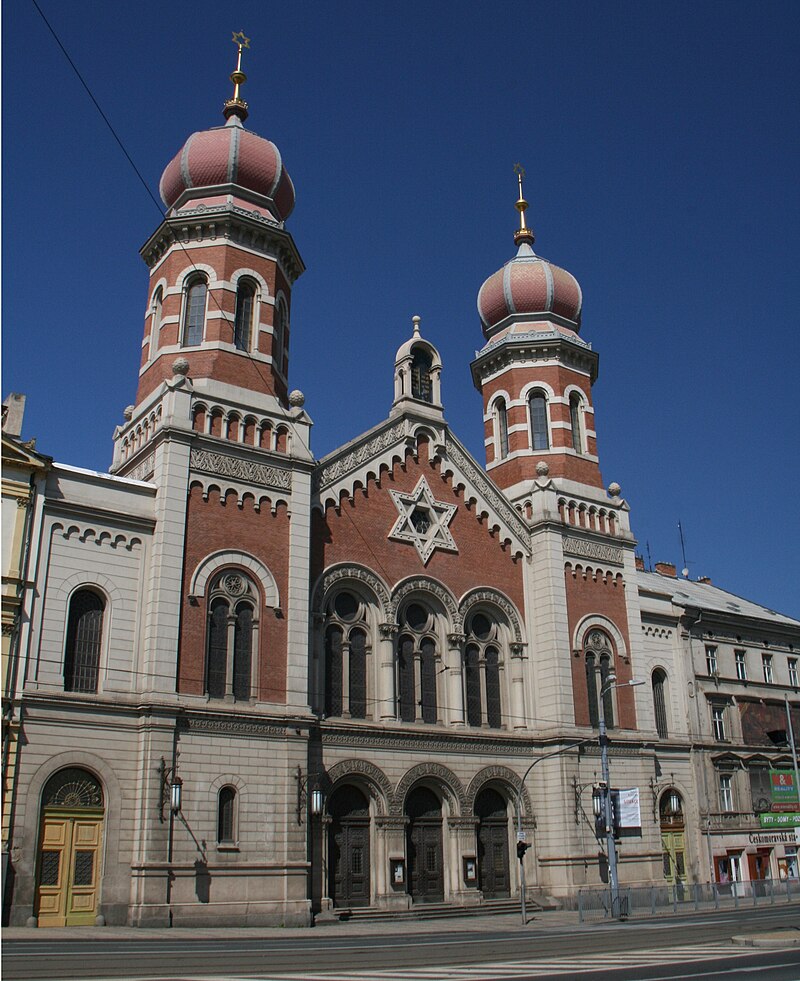
Plzeň (Pilsen) pairs handsome squares and Europe’s third-largest synagogue with one of the world’s most famous brewing traditions. The city gave its name to Pilsner lager in 1842, and brewery tours reveal copper kettles, labyrinthine cellars, and the crisp golden style that rewrote beer history. Beyond hops, Plzeň’s Renaissance and Baroque houses frame the soaring St. Bartholomew’s Cathedral, while museums trace everything from puppetry to engineering. A student population keeps cafes lively and music venues active, and green belts curl around the compact center for easy strolls or bike rides. With family-friendly attractions, from zoo to science center, and day trips into rolling West Bohemia, Plzeň charms both beer pilgrims and casual flâneurs.
Interesting Fact:
Pilsner Urquell, first brewed here, set the global template for pale lagers.
5. Olomouc (Population: 106,063)
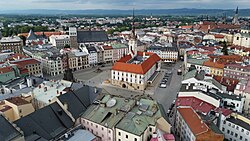
Olomouc spreads across elegant squares punctuated by fountains, palaces, and church towers, echoing its history as a Moravian royal city and ecclesiastical seat. The UNESCO-listed Holy Trinity Column anchors the main square, while arcaded streets lead to Baroque chapels, botanical gardens, and student-packed cafes. Home to one of Czechia’s oldest universities, Olomouc hums with concerts, contemporary art, and friendly pubs pouring local beer. Bike paths stretch along the Morava River; nearby hills hide castles and hiking trails. Despite its grandeur, the city feels intimate, navigable on foot and stitched together by trams. Food markets, cheese stalls, and cozy bistros add everyday flavor to a place where high culture meets casual living.
Interesting Fact:
The 35-meter Holy Trinity Column is one of Europe’s most elaborate Baroque monuments.
6. Liberec (Population: 104,340)
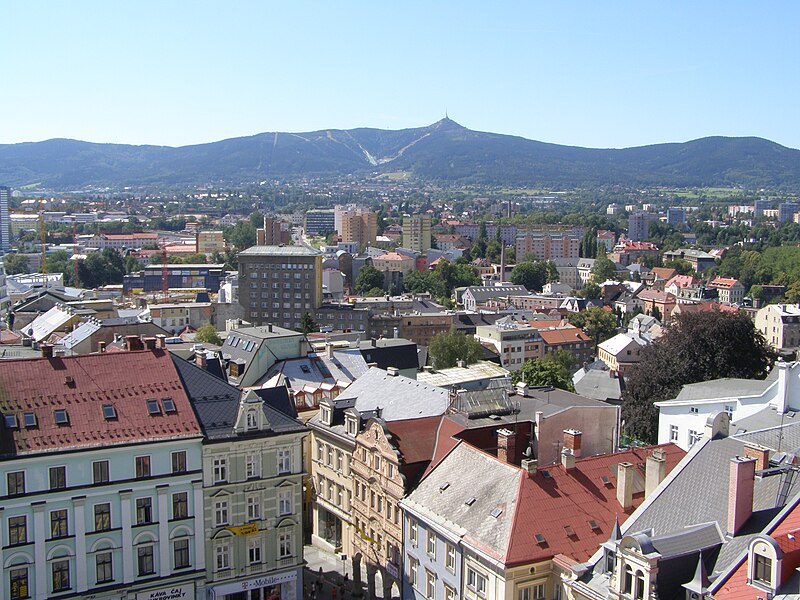
Liberec nestles beneath the Jizera Mountains, its neo-Renaissance town hall and villa districts framed by forested slopes. A textile boom in the 19th century left eclectic architecture and museums, while today’s Liberec mixes family attractions—zoo, botanical garden, iQLANDIA science center—with outdoor life on trails and ski runs. Above the city, the futuristic Ještěd Tower crowns the ridge like a sci-fi lighthouse, reachable by cable car or hike. Cafes and pubs cluster around cobbles and arcades, and trams knit neighborhoods to trailheads in minutes. Winter brings cross-country tracks; summer invites mountain biking and lake swims. Liberec’s balance of culture and alpine energy makes it an easy weekend favorite.
Interesting Fact:
The Ještěd TV Tower doubles as a hotel and won a major architecture prize for its iconic design.
7. České Budějovice (Population: 95,664)
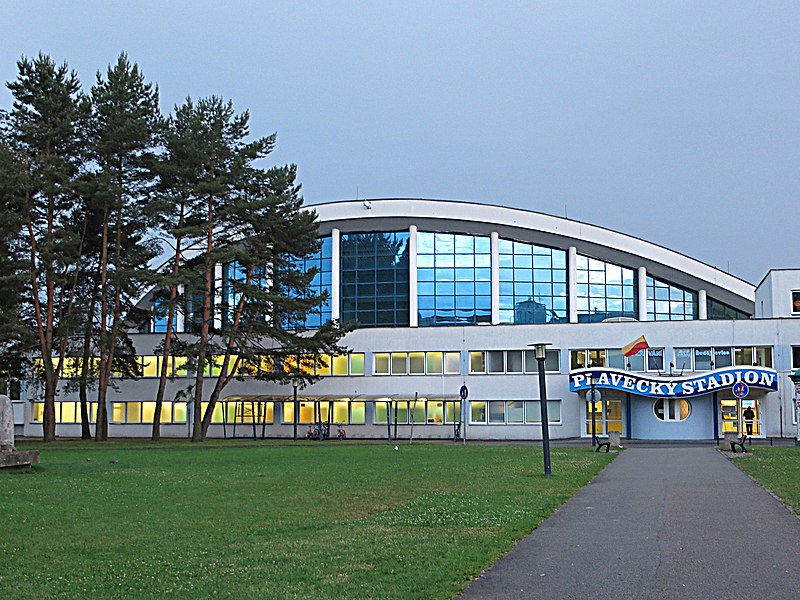
České Budějovice centers on a grand square lined with arcades, pastel facades, and the Samson Fountain, radiating an old-world calm that suits its brewing lineage. The city’s Budweiser Budvar brewery preserves traditional lager methods, while bike paths trace rivers toward fairy-tale Český Krumlov. Climb the Black Tower for tiled roofs and mountain glimpses; descend to cafes serving South Bohemian cuisine and dumpling-friendly sauces. Universities keep the atmosphere youthful, and riverside promenades transition seamlessly to countryside. With easy day trips to castles, ponds, and forests, České Budějovice feels both regional capital and laid-back base camp for South Bohemia.
Interesting Fact:
“Budweiser” here refers to the beer’s geographic origin in Budějovice, a tradition predating U.S. brands.
8. Hradec Králové (Population: 92,649)
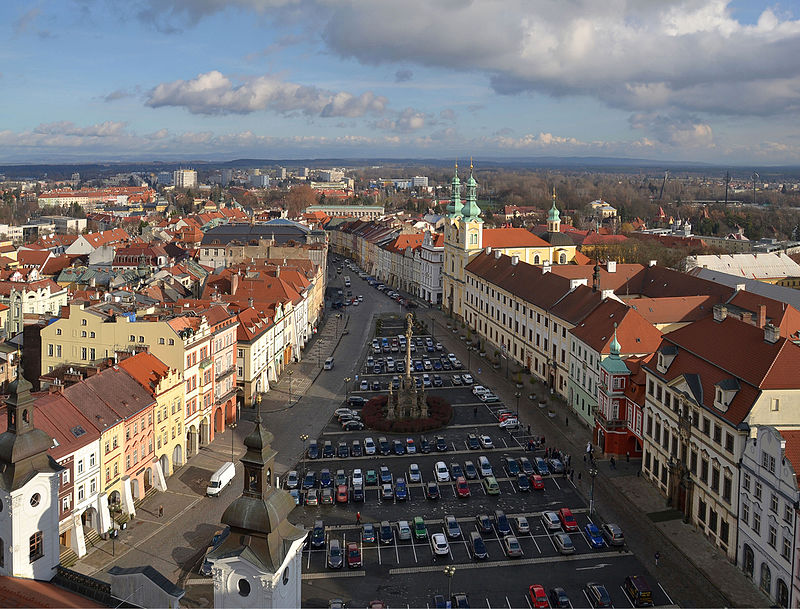
Hradec Králové, at the confluence of the Elbe and Orlice, pairs Gothic steeples with early-20th-century urban planning that earned it the nickname “Salon of the Republic.” Architects Gočár and Janák left a crisp legacy of functionalist buildings, elegant boulevards, and riverside parks perfect for cycling. The Old Town’s red-brick cathedral and White Tower contrast with concert halls, galleries, and a lively student scene that spills onto sunlit squares. Summer festivals animate embankments; nearby flatlands make family rides easy. With clean lines and green spaces, Hradec Králové shows how heritage and modernity can coexist gracefully.
Interesting Fact:
The city’s 16th-century White Tower houses one of Czechia’s largest bells.
9. Ústí nad Labem (Population: 89,713)
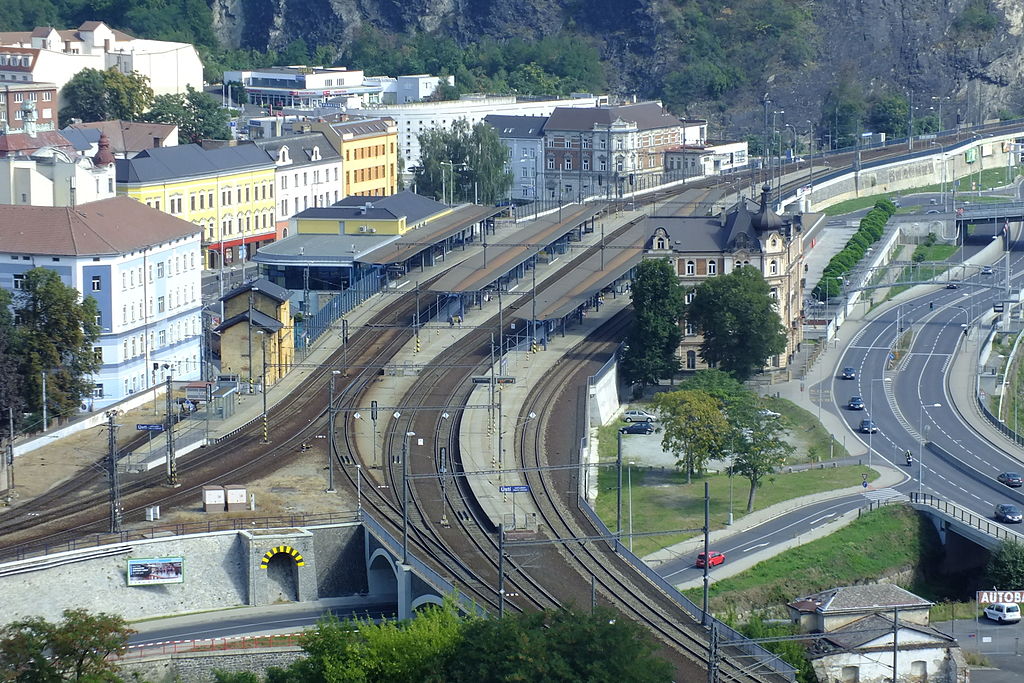
Ústí nad Labem rises above dramatic Elbe canyon cliffs in North Bohemia, where rail bridges, castles, and viewpoints punctuate a rugged landscape. Once dominated by heavy industry, it’s leaning into riverfront parks, hiking routes, and the restored Střekov Castle with sweeping valley vistas. The Mariánský Bridge and cliff-top church tower add architectural quirks, while boats and kayaks ply the river toward Germany’s Saxon Switzerland. Students energize cafes; trails reach sandstone pillars and lookouts in minutes. Ústí’s mix of grit and grandeur makes it an intriguing base for outdoor explorers.
Interesting Fact:
The cliff-side Church of the Assumption appears to lean after WWII bombing shifted its foundations.
10. Pardubice (Population: 89,619)
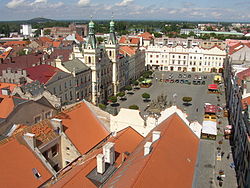
Pardubice is synonymous with gingerbread and horse racing, but its appeal runs wider: a Renaissance chateau, airy squares, and bike paths threading the flat Elbe basin. The city’s gingerbread tradition sweetens markets and cafes, while the Velká pardubická steeplechase draws crowds each autumn. University life keeps galleries and bars lively, and cyclists love the easy riverside routes linking parks, locks, and villages. Industry hums alongside culture, yet the center retains a small-city charm shaped by arcades, towers, and pastel houses. Pardubice is an easygoing gateway to East Bohemia’s castles and lowland forests.
Interesting Fact:
The Velká pardubická is one of Europe’s oldest and toughest cross-country horse races.
11. Zlín (Population: 74,178)
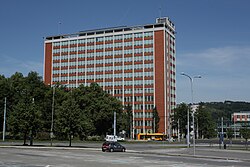
Zlín is a living gallery of interwar modernism, where the Baťa shoe company built a visionary “garden city” of brick-and-glass factories, minimalist housing, and a cube-based urban grid. The functionalist skyline, including the famed Building 21 with its traveling office elevator, speaks to an era when design met social ambition. Today, universities, film schools, and creative hubs animate those clean lines with festivals and startups. Trails loop into the rolling Hostýn and Vizovice Hills, and local gastronomy spotlights regional cheeses and plum brandy. Zlín’s legacy proves how industry, architecture, and everyday life can intertwine.
Interesting Fact:
Baťa’s Building 21 famously had a movable office elevator used by the company’s director.
12. Havířov (Population: 68,153)
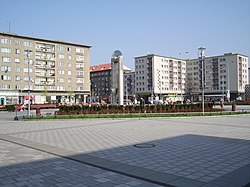
Havířov, a post-war planned city near Ostrava, showcases mid-century urbanism: broad avenues, green courtyards, and neighborhoods designed for miners and their families. While its name reflects a coal heritage, Havířov increasingly leans on parks, sports facilities, and family amenities. Forests and reservoirs ring the outskirts, offering weekend cycling and picnics, while local festivals and markets bring people onto plazas. The city’s scale and greenery make daily life simple—schools, clinics, cafes—and transport links to regional jobs remain convenient. Havířov’s identity is practical and community-minded, a snapshot of Czechia’s modern social history.
Interesting Fact:
The name “Havířov” literally means “miners’ town,” reflecting its 20th-century origins.
13. Kladno (Population: 67,756)
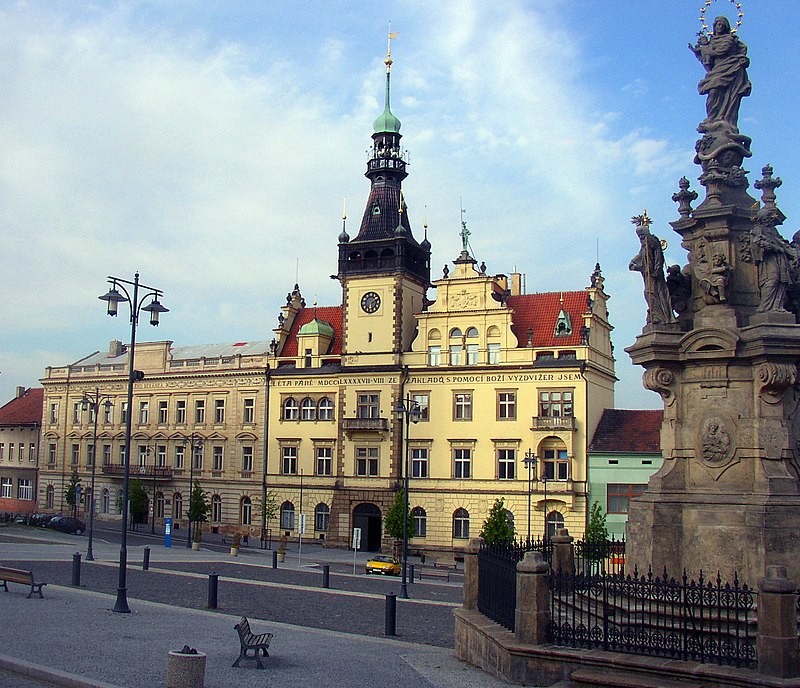
Kladno, west of Prague, grew on coal and steel, and has spent recent decades diversifying into services, logistics, and light industry. The center balances classic townhouses with modern retail, and neighborhoods connect to forests and ponds for easy outdoor escapes. Sports culture runs deep, from hockey pride to bike paths crossing former mining lands now recast as parks. With Prague’s airport and highways nearby, Kladno functions as both commuter base and independent city, backed by schools, clinics, and community venues. It’s a practical, well-positioned place with blue-collar roots and suburban convenience.
Interesting Fact:
Kladno’s hockey tradition produced legends who helped put Czech ice hockey on the world stage.
14. Most (Population: 61,306)
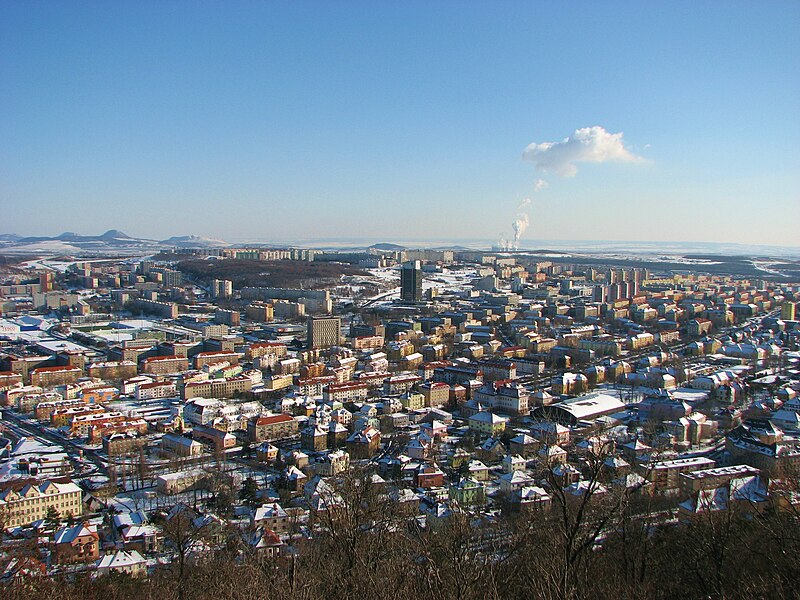
Most tells a dramatic story of reinvention: its medieval core was relocated in the 20th century to make way for coal mining, including the engineering feat of sliding a Gothic church to a new site. Today, lakes fill former pits and hills have greened, shifting the city’s outlook toward recreation and nature. Housing estates mix with new sports areas and viewpoints; cultural centers and museums preserve memory while looking forward. Proximity to the Ore Mountains adds skiing and hiking, and rail links bring in commuters and visitors. Most is a living example of post-industrial adaptation.
Interesting Fact:
The Church of the Assumption in Most was moved 841 meters on tracks—the world’s heaviest building relocation of its time.
15. Opava (Population: 55,146)
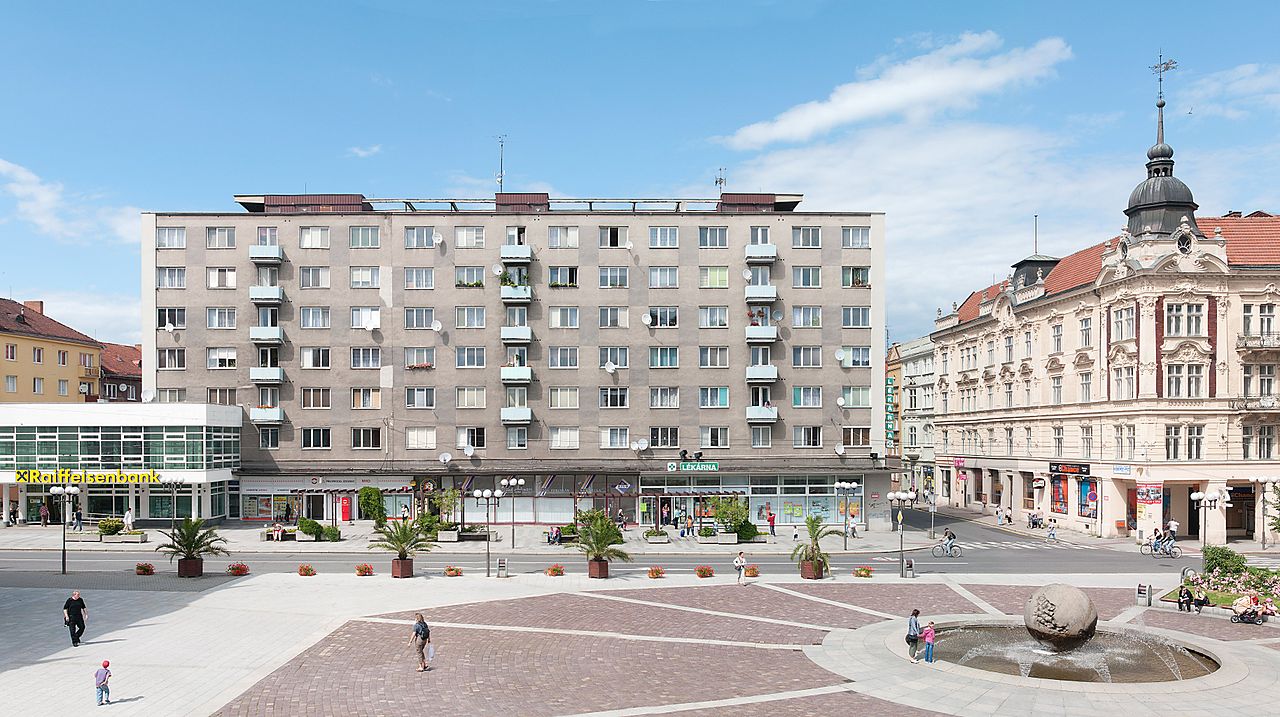
Opava, near the Polish border, blends Silesian elegance with university verve. Neo-Gothic spires and pastel facades circle parks and riverside walks, and museums trace a complicated borderland story shaped by empires and industries. The city’s theaters and galleries punch above their weight, and cafes cluster around handsome squares. Day trips reach rolling countryside and château-dotted valleys, while cycling routes thread floodplains and villages. Opava’s measured pace, cultural depth, and student heartbeat make it quietly magnetic.
Interesting Fact:
Opava was once the historical capital of Austrian Silesia.
16. Frýdek-Místek (Population: 53,698)
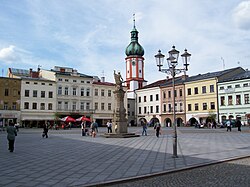
Frýdek-Místek is two towns in dialogue across the Ostravice River: castle-capped Frýdek and market-square Místek, merged into one city with double the character. The Baroque château museum, church towers, and brewery courtyards set a historic tone, while bike paths, skate parks, and riverside cafes add modern leisure. Close to the Beskid Mountains, the city is a springboard to hiking, skiing, and wooden-church trails. Festivals celebrate beer, folklore, and food, and family companies sit alongside larger manufacturers. It’s a friendly, outdoorsy city where the weekend is always within reach.
Interesting Fact:
The city’s dual identity stems from two historic towns officially united in the mid-20th century.
17. Jihlava (Population: 50,523)
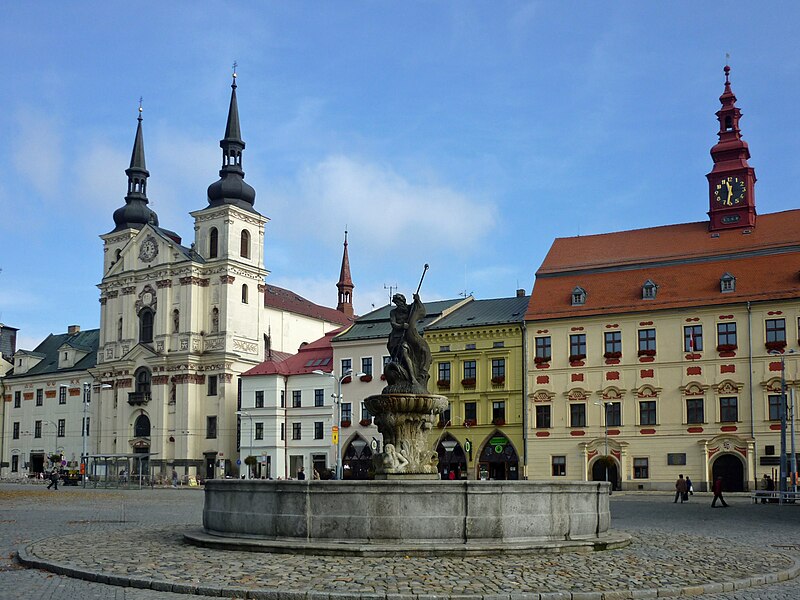
Jihlava, on the Bohemian-Moravian Highlands, built its medieval wealth on silver and now charms with a large square, catacombs, and colorful burgher houses. The zoo and aquapark pull families, while nearby forests and reservoirs draw hikers and cyclists through rolling country. Cultural life is anchored by film and music events, and students keep cafes humming. The city’s position midway between Prague and Brno makes it an easy stop on cross-country trips, yet its pace remains relaxed. Historic cellars, city walls, and hill views reward unhurried explorers.
Interesting Fact:
Jihlava’s underground corridors stretch for kilometers beneath the old town.
18. Karviná (Population: 48,473)
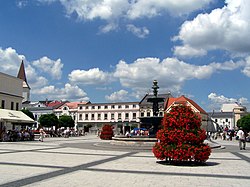
Karviná’s landscape bears the imprint of coal mining: tilting church towers, subsidence lakes, and re-greened spoil heaps tell a story of extraction and renewal. Health spas at Darkov highlight mineral waters and historic bath architecture, while parks and sports centers modernize daily life. Cross-border links to Poland shape shopping, jobs, and culture, and rail makes the wider region accessible. Karviná is pragmatic and evolving, mixing spa traditions, parkland, and the memory of mines.
Interesting Fact:
The leaning church of St. Peter of Alcantara in Karviná visibly sank due to mining subsidence.
19. Teplice (Population: 48,428)
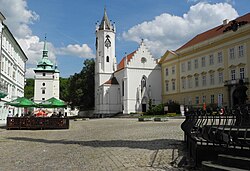
Teplice, one of Central Europe’s oldest spa towns, lines its parks with colonnades, pavilions, and pastel hotels once favored by nobility and composers. Thermal springs underpin wellness centers, while cafes, promenades, and flowerbeds lend a leisurely rhythm. The Ore Mountains rise to the north for skiing and cycling, and nearby castles round out itineraries. Although industry lingers in the wider region, Teplice’s core holds onto spa elegance and garden calm, making it a restorative base within reach of nature.
Interesting Fact:
Beethoven and Goethe both visited Teplice during the city’s 19th-century spa heyday.
20. Děčín (Population: 46,337)
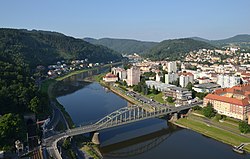
Děčín straddles the Elbe where sandstone cliffs squeeze the river into a dramatic gorge. The clifftop Děčín Castle surveys bridges and boat traffic, while ferries, kayaks, and trains carry adventurers into Bohemian Switzerland’s rock labyrinths. The city’s parks and embankments are evening promenades for families and cyclists, and viewpoints rise quickly from town to wide panoramas. Architecture ranges from Baroque to Art Nouveau, stitched together by compact streets. Děčín’s identity is inseparable from the river and stone—movement, trade, and nature in constant conversation.
Interesting Fact:
The Děčín Castle’s Rose Garden is a terraced oasis perched dramatically above the Elbe.
21. Chomutov (Population: 45,549)

Chomutov sits at the foot of the Ore Mountains, a onetime mining and industrial hub now edging toward greener horizons. The Kamencové jezero (Alum Lake) offers city-side swimming, while the Podkrušnohorský Zoopark sprawls across wide enclosures with mountain backdrops. Historic squares, churches, and museums recall medieval and Habsburg chapters, and bike paths connect to reservoirs and forest roads. Winter brings nearby slopes; summer fills lakes and festival stages. Chomutov’s balance of everyday amenities and easy nature access defines its appeal.
Interesting Fact:
Chomutov’s Alum Lake is unique in Europe for its mineral composition and clarity.
22. Jablonec nad Nisou (Population: 44,486)

Jablonec nad Nisou made its name on glass and jewelry, a craft legacy visible in museums, boutiques, and Art Nouveau facades. The city rises toward the Jizera Mountains, where trails, lookouts, and cross-country ski routes start almost from tram stops. A reservoir doubles as a summer beach and winter postcard, and cafes center on pastries and mountain-town comfort. Design schools and studios keep the glass tradition inventive, while weekenders filter through with hiking poles and bikes. Jablonec is equal parts workshop and gateway.
Interesting Fact:
The city is world-renowned for costume jewelry and glass bead production.
23. Karlovy Vary (Population: 44,323)

Karlovy Vary unfurls along a wooded valley where colonnades shelter steaming mineral springs. Spa wafers, porcelain shops, and grand hotels recall a Belle Époque heyday that still glitters during the annual international film festival. Visitors sip from numbered cups as orchestras play on riverside promenades; wooded switchbacks lead to lookouts above the pastel cityscape. Traditional glassworks and liqueur distilleries round out tours, and day trips reach castles and half-timbered villages. Despite its glamour, Karlovy Vary retains a gentle pace built around walks, waters, and wellness.
Interesting Fact:
Legend says Emperor Charles IV founded the spa after his hunting dogs discovered a hot spring.
24. Prostějov (Population: 43,666)
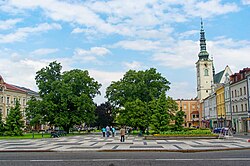
Prostějov, south of Olomouc, pairs Renaissance burgher houses and arcades with a reputation for textiles and fashion. Squares host markets under elegant facades, and parks fringe residential quarters that feel both compact and green. Local theaters and galleries punch above the city’s size, and cafes lean into Moravian cakes and coffee. Cyclists roll into farm country within minutes, while trains tie Prostějov to bigger hubs. The city’s comfort lies in its balance—historic enough to wander, practical enough for daily life.
Interesting Fact:
Prostějov’s long tailoring tradition earned it the nickname “the Moravian Manchester.”
25. Mladá Boleslav (Population: 42,536)
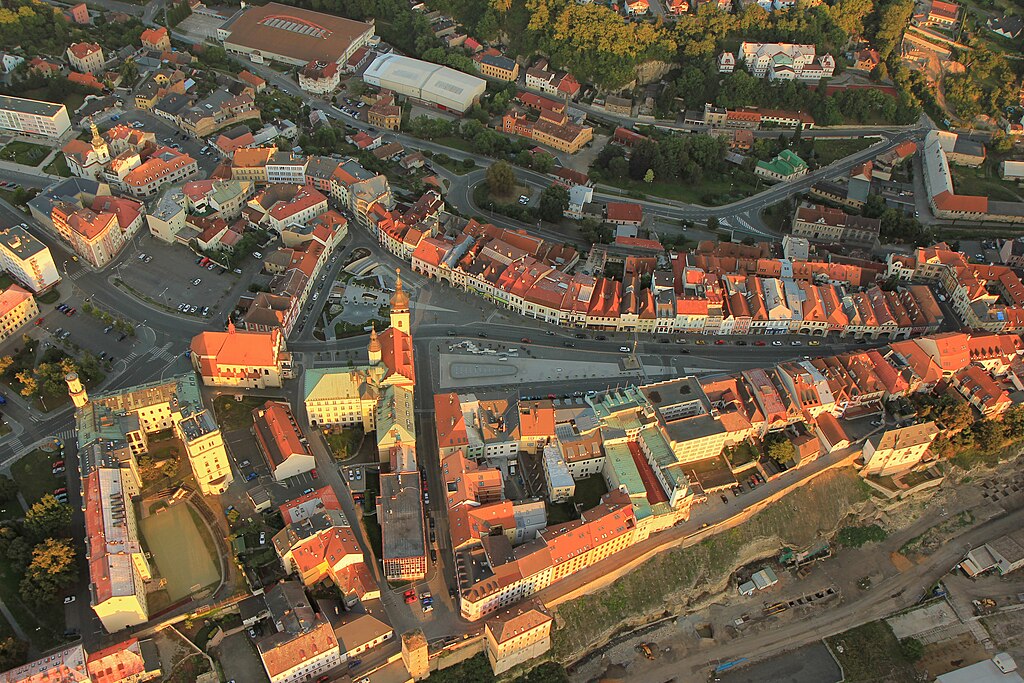
Mladá Boleslav thrives on engineering, most famously as the home of Škoda Auto. The company’s museum and factory tours chart Czech automotive history from early prototypes to global production. Beyond engines, the old town’s lanes climb to a castle above the Jizera River, and parks offer respite between shifts and sightseeing. Efficient roads and rails make Prague commutes feasible, yet the city feels solidly self-contained with schools, sports halls, and cultural centers. Surrounding hills hide reservoirs, bike trails, and villages for quick escapes. Industry, heritage, and everyday livability intersect comfortably here.
Interesting Fact:
Škoda Auto, founded in the 1890s, makes Mladá Boleslav one of Europe’s classic car-towns.




